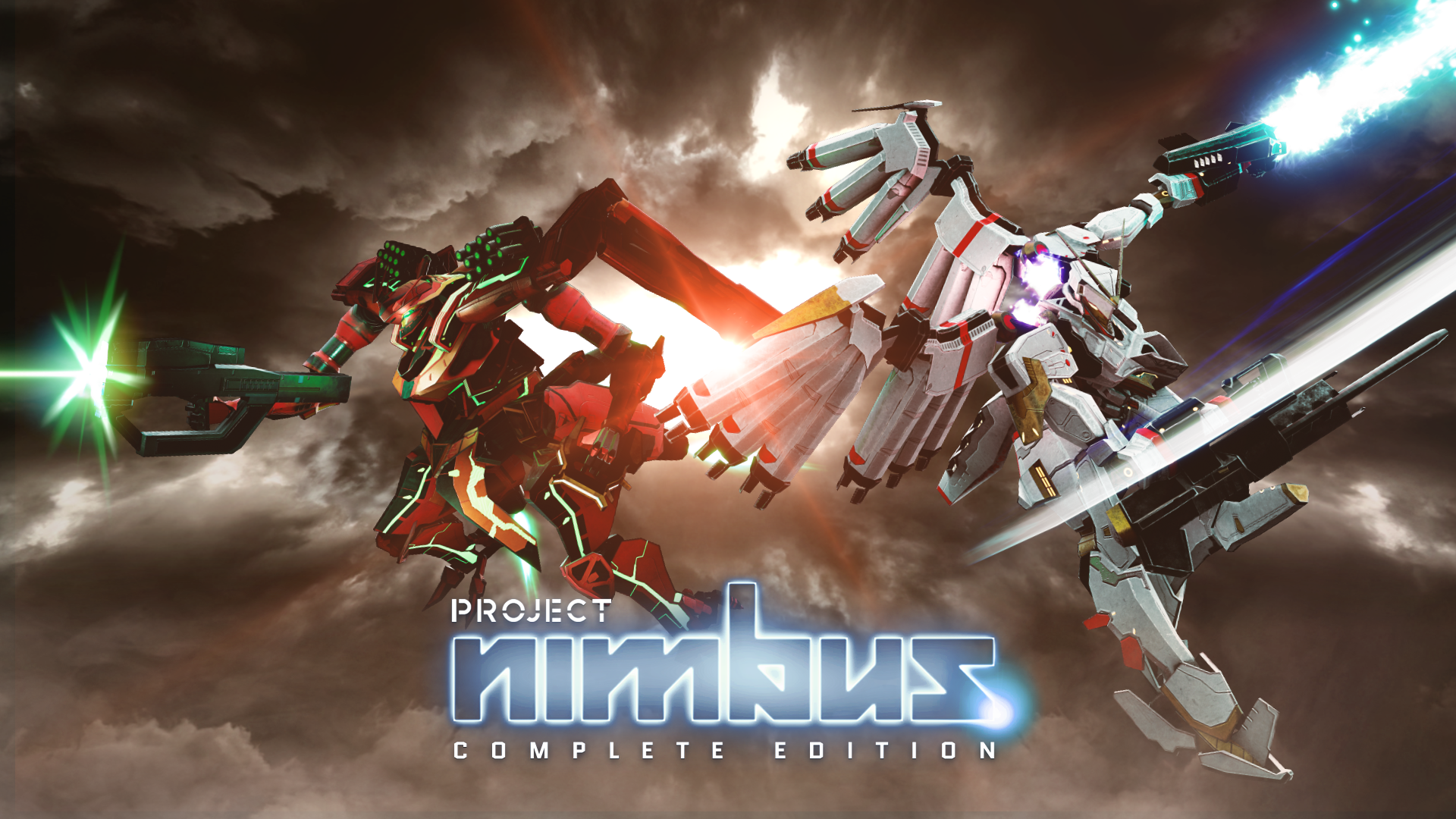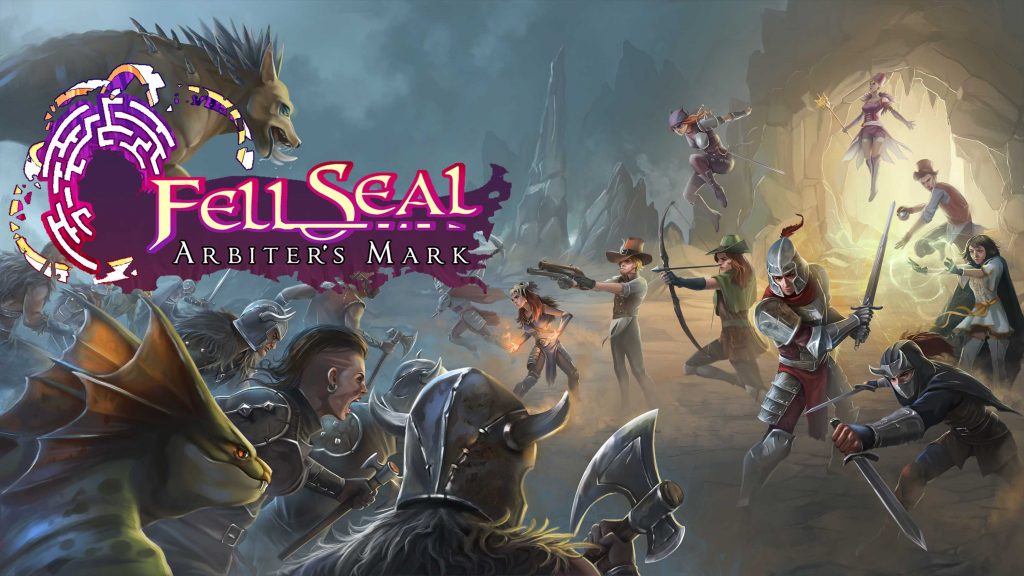Project Nimbus: Complete Edition is a mech action game, released for the Nintendo Switch on May 16. Developed by GameTomo and GameCrafterTeam, Project Nimbus easily calls to mind the Gundam series and mixes it with a healthy dose of Ace Combat gameplay. Included in the complete edition is a survival mode where you combat waves of enemies, and WARFRONT, offering replayability through modes like Base Defense, Interception, and Assassination. This review dives into the campaign.
Taking place in a war torn future, Project Nimbus sees the player observing and participating in skirmishes from many different perspectives, showing a story of war and its effects. Does this story of war and conflict hit the same emotive beats as its inspiration? Does the gameplay offer the blistering action associated with the mech combat genre? Because the imagery and mechanics immediately bring these franchises to mind, its a good place to start.
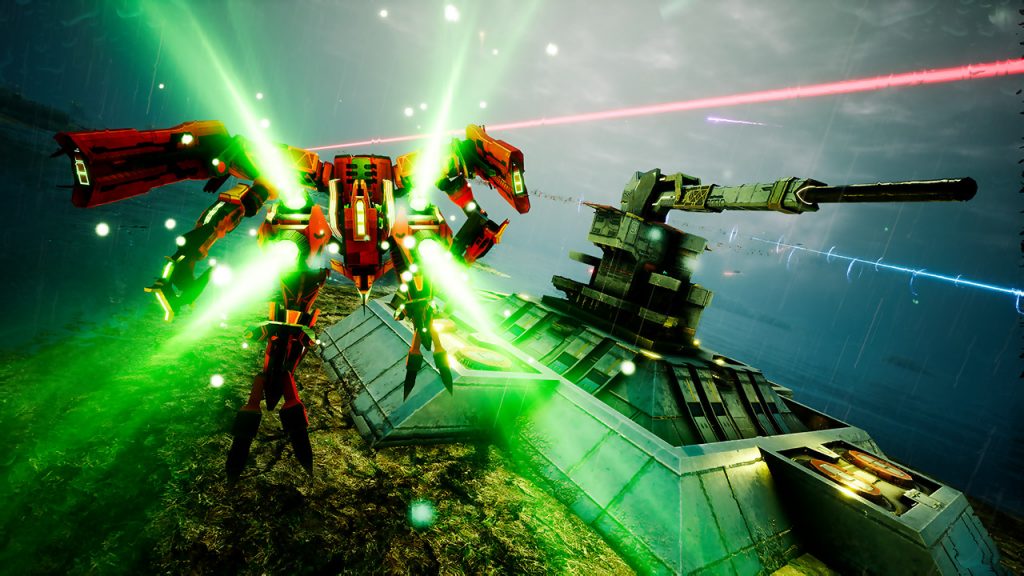
Courtesy: GameTomo
Project Nimbus leaves a positive first impression. Combat is fun and responsive, and while this isn’t the greatest looking game out there, there is attention to detail where there you would expect. What GameTomo and GameCrafterTeam pull off is commendable. When I really started to get into the combat I was a little overcome with button management, but this was solved easily with the Nintendo Pro Controller. Unfortunately, the Joy Con cause cramps if you have anywhere near approaching large hands. Because the pace of the combat is quick, requiring item swapping and maneuvering at a moments notice, fatigue sets in quickly. The Pro Controller solved this for me. If you have access to a full fledged controller, take the opportunity.
The longer I sat with Project Nimbus, though, the more I started to see the negatives. Let’s start with combat. Icons are fairly small on the HUD, and determining what weapon you have selected is difficult at the start, and only gets slightly better as you go. Bigger, flashier icons would have done wonders. I eventually learned how to tell what I was selecting, but a clearer tutorial explaining the strengths and weaknesses of weapons would have been welcomed. I never got a good sense of which weapons to use in which scenarios. I pretty much just cycled through the weapon inventory at random, using weapons until their charge was depleted, swapping and using another while recharging, and so forth. Communication of weapon particularities would have added a tactical edge.
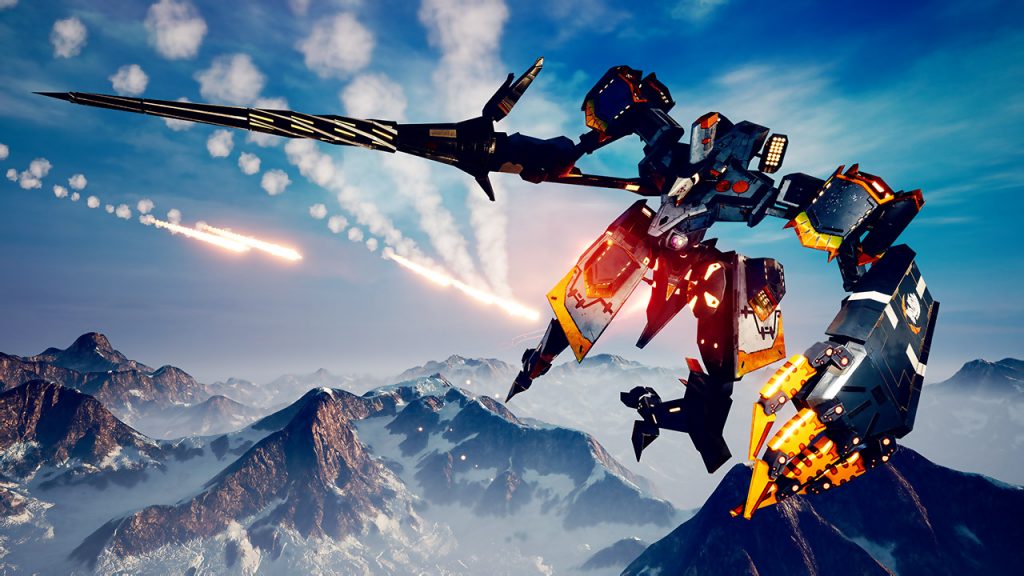
Courtesy: GameTomo
I was looking for the development of this type of strategy as the campaign progressed but, sadly, never found it.
I think a simple tutorial walking the player through each of the weapon types and enemies that were weak/strong against them would have mitigated much of this. Weapons were shown as simply a means to kill enemies and not a tool for dealing with specific problems. In practice, it meant that my gameplay style never moved beyond what I was doing in the initial missions.
I found a similar issue with enemy variety. Enemies had a “type” to them, but this was not communicated clearly to the player. Whereas the player mech is a sizable model, enemies appear as specs on the horizon and remain tough to differentiate between on the battlefield. Much of this comes down to small icons and indicators, but also to small models with no distinguishable strength or weakness. Communication was low, so I whittled away at my opponents without prioritizing certain enemies over others.
These two issues, poor communication of weapon and enemy type, culminated in battle scenarios that skewed toward the problematic side of chaotic. Instead of sizing up my opponents and strategizing on the fly, my main priority was to destroy everything and stay alive. More care being paid to enemy types and placement would have helped this. This bummed me out because the playing fields were interesting! There were ravines with turrets protecting a base, floating cities that could be flown to and explored, battles over sheets of ice in the Arctic ocean, and even dog fighting in space (one of my favorites). The levels were varied and interesting. However, once I was in the thick of battle, I felt like I was just firing away with no tangible distinction between what I was shooting at.
With all that being said, the final mission really surprised me! It was not what I was expecting at all! You fight a larger encounter than you have until this point, and it had distinct phases and attacks that require unique approaches. It felt like this huge set piece, and really capped off the game well. It’s a shame that these set pieces were not used more frequently. The entire game (a little over 5 hours or so) felt like the same type of skirmishes over and over again in different settings. The uniqueness of the final battle left quite the impression. The feeling of genuine surprise after hours of similar fights will stick with me. I hope GameTomo and GameCrafterTeam find a way to work more unique encounters into future projects, as I was delighted to see such a nice conclusion.
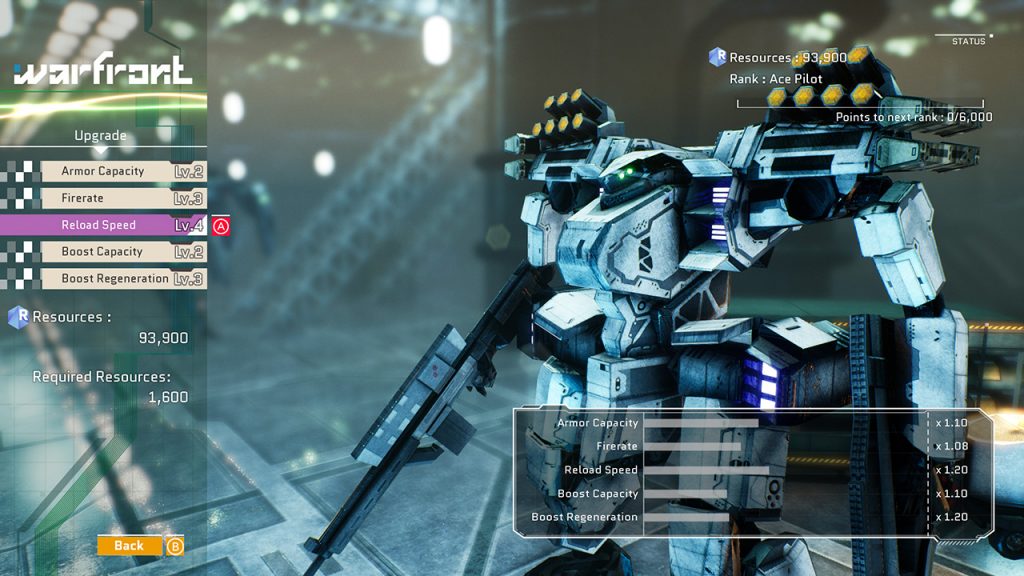
Courtesy: GameTomo
Let’s change gears now and talk about the story. The heart of the story is beautiful: a group of seasoned fighter pilots from warring factions come to terms with the cost of war. Some of the storytelling on board is unique too. One late game moment stands out. After a difficult mission, you end up controlling one of the main characters. I enjoyed the opportunity to experience what a character was going through, instead of watching a cutscene or listening to an audio log. Being outside of combat, controlling the character, provided a moment of empathy and connection.
Just as with the combat, there were some issues with how the story is told. There isn’t enough variety. All missions follow a distinct pattern: A mission briefing, showing a distinct wireframe or grid based graphical presentation of the objective; a selection screen, where you can listen to optional audio logs to fill in character motivations; and a combat scenario, which I have described above. This pattern is on rinse and repeat. I saw some well orchestrated moments throughout the campaign, I just found myself wishing for more variety. The biggest issue is the lack of variety doesn’t help the player connect to any of the characters. I listened to every single audio log, and I still can’t remember a character’s name. I know that there are two superpowers. One is Russian, and the other is American, with a terrorist group battling the two. You might play one mission from the American side, and then the next mission you jarringly switch to the Russian side. There’s no real segue explaining why your perspective shifts. Its difficult to follow what’s going on, and it left me asking so many questions while I was playing.
Both the final mission and the moment of empathy mentioned above offered a connection to the characters. I could feel the stakes. Sadly, these moments were few and far between. As it stands, if you have a proclivity towards the anime mech genre, you just might find something to hold on to. I really wish GameTomo and GameCrafterTeam the best. I can tell they have some talent on board, and I’d love to see what this team could do after trimming some of the fat. Project Nimbus is a fun, mech action game that wants to take to the skies. Unfortunately, it has some added weight that keeps it hovering just above the surface.
